Pedal Board Update- Zoom G3X Modeler
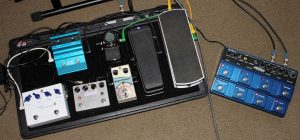
Here’s a picture of my pedal board before the G3X. I had a noise gate, a couple types of overdrive, a compressor, wah. volume pedal, tuner, and a delay/looper (which fell off the side of the pedal board). I ran out of room for my chorus pedal, and I’m completely lacking reverb, pitch and any more esoteric effects.
And here’s a picture with the Zoom G3X on the pedalboard, replacing the noise gate, wah, volume and delay.
The Zoom G3X is certainly not perfect and I will address some of the more serious problems in a minute, but at this price point and in comparison to other units available, the Zoom strikes a pretty reasonable balance of features.
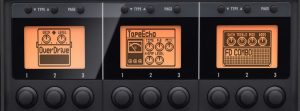
The three foot switch buttons can operate in two different modes- stompbox mode which turns on and off the individual effects, or preset selection mode for navigating your set list. If you just want to set this thing up with three effects and never change them, stompbox mode is ideal. But if you’re going to have a number of presets tailored to specific songs in your set, the preset mode is easier. In both foot switch modes there are other features available by pressing two of the switches simultaneously- for changing banks in program selection mode or changing presets in stomp box mode. I generally have found that trying to use two switches at once during live performance is tricky and can lead to mistakes. There’s also a longer delay for the change to occur.
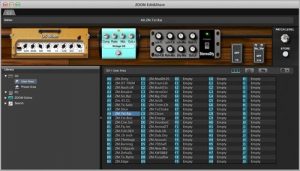
Now on to sound quality: there are certainly some winners and losers in the effects. The Governor overdrive is surprisingly good, but I prefer to use my real-world pedals and amp for overdrive. I am more focused on the Zoom’s time based effects like delays, chorus and flanger, and these all sound perfectly fine. I also use the octave pitch shifter for a couple tunes, and I find it to be just so so- the tracking is a little iffy. The compressors are just passable. But the delays sound good and you can hook up a tap tempo switch which is ideal. Reverbs are very low-quality but usable in a pinch. As I mentioned, I haven’t really evaluated the cabinet & amp modeling at all- I just don’t use them.
Now onto one of my biggest concerns: there is no true bypass, and worse- the Zoom appears to degrade the signal quality as the guitar signal fades out. The first unit I had did this so badly that I returned it as defective. The replacement unit I received also does it, but not as badly. I also tried a Zoom G5 and heard the same effect, so I presume this is an artifact of the way they do signal processing. Here’s an audio recording. Listen to the tail of the audio as it fades out:
Audio Example
It is a subtle artifact and I don’t notice it at all while playing with the band. But when I am sitting in a quiet room playing, I notice this faint crunching distortion in the signal as the guitar sound fades out. In principle, this bothers me a lot. Wish it had true bypass!
Update May 29, 2014: I’ve added a true bypass looper switcher to work around the G3X noise, and add tap tempo, etc.
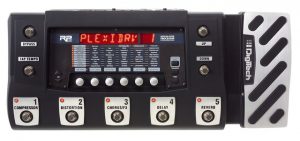
There’s one other quality issue to mention. I have never seen the Zoom crash or hang. So I am quite confident using it live. The only issue that I have seen is that, very rarely, when controlling a parameter from the wah treadle, it doesn’t seem to work and I need to switch away from the program and back before it will. This has only happened a couple times, and in general hasn’t caused too much of a problem for me.
So, that’s a pretty mixed review. I’m going to continue using the Zoom G3X until I can find something better.
Update May 29, 2014: I added a true bypass looper switcher
Update June 15: I’ve built a new pedal board with the Zoom G3x and looper switcher.
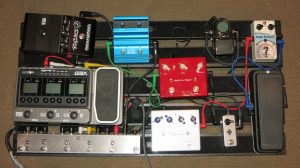
Update November, 2014: I found something better! Pedal Board Update– Line 6 HD500X
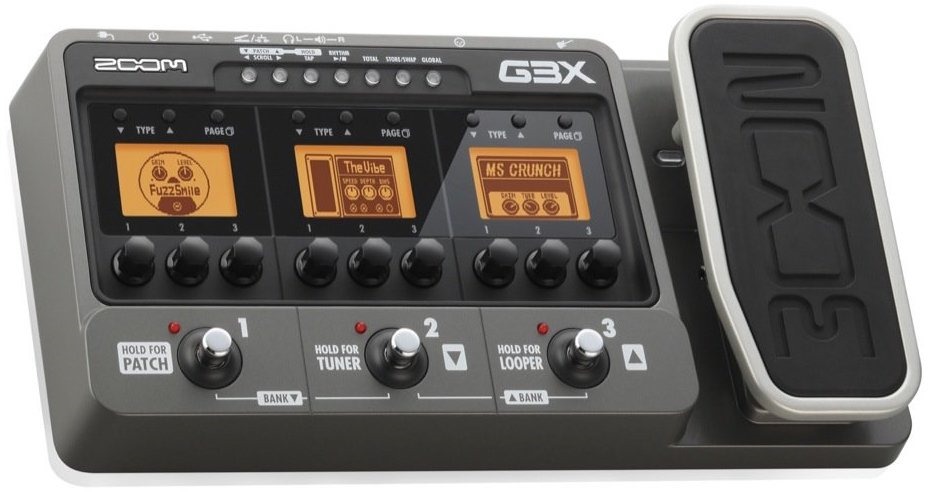
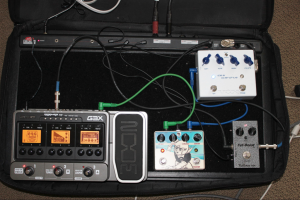
Pedaltrain-Inspired DIY Pedal Board - Planet Z
March 26, 2017 @ 9:54 am
[…] my complement of pedals has gradually been expanding. I’m generally not a big fan of modelers, but I added the Zoom G3x for flexibility with delays, choruses and phasers, etc. It has a fairly sizeable footprint, so I […]
True Bypass Looper - Planet Z
March 26, 2017 @ 5:37 pm
[…] I mentioned in my previous pedal board update, I also want a way to bypass my Zoom G3X modeling pedal to take it out of the signal chain when […]
Pedal Board Update– Line 6 HD500X - Planet Z
March 26, 2017 @ 10:11 pm
[…] my last pedal board update back in May, I talked about having added a Zoom G3X and loop switcher to my pedal board. I also mentioned how I […]
Enter The HD500X - Planet Z
March 27, 2017 @ 9:52 pm
[…] retired the old pedal board, along with the Zoom G3X, the loop switcher and a bunch of pedals I won’t be needing anymore! And […]
Filling In The Spaces - Planet Z
April 3, 2017 @ 7:49 am
[…] Pedal Board Update- Zoom G3X Modeler […]